Are you struggling to budget for your power distribution project? You're not alone. Many engineers and project managers find it challenging to estimate dry type transformer costs accurately. But what if you had a comprehensive guide to 2025 pricing trends at your fingertips?
In 2025, dry type transformer prices vary significantly based on capacity (kVA) and voltage level. A 250kVA, 11/0.4kV transformer typically costs $2,000-$2,700, while a 1000kVA unit ranges from $6,500-$9,000. Prices increase with voltage class, with 33kV units costing about 20% more than 10kV equivalents. Factors like cooling method (AN vs AF), certifications (CE, IEC), and raw material costs (copper, silicon steel) also impact pricing. Chinese manufacturers offer competitive rates, with prices varying based on customization and export requirements.
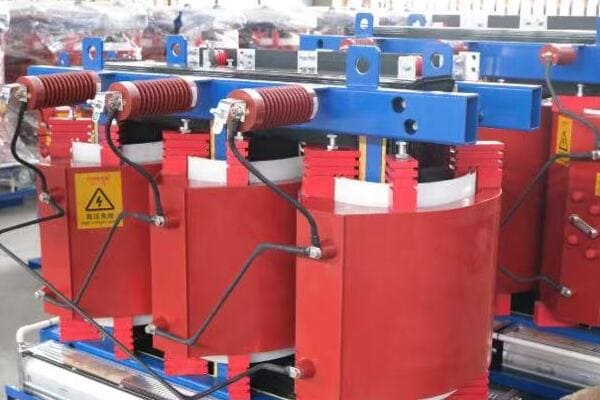
In this comprehensive guide, I'll walk you through the key factors influencing dry type transformer prices in 2025. We'll explore typical cost ranges for various kVA ratings and voltage classes, discuss how certifications and cooling methods affect pricing, and provide insights on sourcing from Chinese manufacturers. Whether you're planning a small commercial installation or a large industrial project, this article will give you the knowledge to make informed decisions and optimize your budget.
What Affects the Price of a Dry Type Transformer in 2025?
Are you finding it difficult to understand why dry type transformer quotes can vary so widely? You're not alone. Many buyers struggle to identify the key factors driving costs. But what specific elements have the most significant impact on dry type transformer pricing in 2025?
The price of a dry type transformer in 2025 is influenced by several key factors: raw material costs (especially copper and silicon steel), kVA rating, voltage class, insulation level, cooling method, and required certifications. Higher voltage classes (e.g., 33kV vs 10kV) increase costs due to more complex winding structures and insulation requirements. Advanced cooling methods (AF vs AN) and stringent certifications (CE, IEC, KEMA) also drive up prices. Additionally, customization requirements, production volume, and global market conditions play roles in determining the final cost.

Key Cost Factors for Dry Type Transformers
Let's break down the main elements affecting pricing:
- Raw Materials
- Capacity and Voltage Class
- Insulation and Cooling
- Certifications and Standards
- Customization and Production Volume
Raw Materials
Core components driving costs:
- Copper: Primary material for windings, subject to market fluctuations
- Silicon Steel: Used for the transformer core, impacts efficiency and cost
- Insulation Materials: Resin and other materials for electrical isolation
I recently analyzed the cost structure of a 1000kVA dry type transformer. The copper windings alone accounted for nearly 40% of the total material cost, highlighting the significant impact of raw material prices on overall transformer pricing.
Capacity and Voltage Class
Scaling costs with power requirements:
- kVA Rating: Higher capacity generally means higher cost
- Voltage Class: Higher voltages require more insulation and complex designs
During a recent project, we compared quotes for 11kV and 33kV transformers of the same kVA rating. The 33kV unit was approximately 25% more expensive due to the additional insulation and more complex winding structure required.
Insulation and Cooling
Ensuring performance and longevity:
- Insulation Class: Higher temperature ratings increase cost
- Cooling Method: Forced air (AF) cooling is more expensive than natural air (AN)
Here's a quick comparison of cooling methods:
| Cooling Method | Cost Impact | Typical Application |
|---|---|---|
| AN (Air Natural) | Base cost | Indoor, lower capacity |
| AF (Air Forced) | +10-15% | Higher capacity, industrial |
| AFWF (Water Cooled) | +25-30% | Specialized, high capacity |
Certifications and Standards
Meeting regulatory requirements:
- IEC 60076: International standard for power transformers
- CE Marking: Required for European market entry
- KEMA or CESI Type Testing: Adds credibility but increases cost
Customization and Production Volume
Balancing specificity and economy:
- Custom Designs: Tailored solutions often cost more
- Production Quantity: Larger orders can reduce per-unit costs
Key points affecting dry type transformer prices in 2025:
- Raw material costs, especially copper, have a significant impact
- Higher kVA ratings and voltage classes increase prices
- Advanced cooling methods and insulation classes add to the cost
- Certifications and compliance with international standards affect pricing
- Customization requirements can significantly influence the final price
In my experience, understanding these factors is crucial for accurate budgeting and negotiation. I recall a project where we initially underestimated the cost impact of upgrading from an AN to an AF cooling system for a 2000kVA transformer. This oversight led to budget adjustments later in the project. By thoroughly considering all these factors upfront, we've since been able to provide more accurate cost estimates and avoid surprises.
For example, in a recent renewable energy project, we needed dry type transformers with special corrosion resistance for a coastal environment. By working closely with the manufacturer to understand the cost implications of these customizations, we were able to optimize our design choices and balance performance requirements with budget constraints.
As we move on to discuss specific price ranges by kVA rating, keep these cost factors in mind. Understanding their influence will help you interpret the pricing data more effectively and make more informed decisions for your projects.
Dry Type Transformer Price List by kVA Rating (Typical Ranges in USD)?
Are you struggling to find reliable pricing information for dry type transformers across different capacities? You're not alone. Many buyers find it challenging to estimate costs accurately for their projects. But what if you had a comprehensive price list covering the most common kVA ratings used in various applications?
Dry type transformer prices in 2025 vary significantly based on kVA rating. Typical ranges include: 100kVA ($1,200-$1,800), 250kVA ($2,000-$2,700), 500kVA ($3,500-$4,800), 1000kVA ($6,500-$9,000), 1600kVA ($9,500-$12,500), and 2500kVA ($14,000-$18,000). These prices are for standard 11kV/0.4kV configurations with basic certifications. Factors like higher voltage classes, advanced cooling methods, and additional certifications can increase costs. Prices are FOB China and may vary based on specific project requirements and market conditions.

Detailed Price Breakdown by kVA Rating
Let's examine the typical price ranges for common dry type transformer capacities:
- 100kVA - 250kVA Range
- 500kVA - 1000kVA Range
- 1600kVA - 2500kVA Range
- Factors Influencing Price Within Each Range
- Application Scenarios and Selection Guidance
100kVA - 250kVA Range
Ideal for small to medium applications:
- 100kVA: $1,200 - $1,800
- 250kVA: $2,000 - $2,700
- Common voltage: 11/0.4 kV
- Typical cooling: AN (Air Natural)
I recently worked on a project for a small office complex where we installed several 250kVA dry type transformers. The cost-effectiveness of these units, combined with their compact size and low maintenance requirements, made them perfect for the distributed power needs of the building.
500kVA - 1000kVA Range
Suitable for larger commercial and light industrial use:
- 500kVA: $3,500 - $4,800
- 1000kVA: $6,500 - $9,000
- Common voltage: 11/0.4 kV or 22/0.4 kV
- Typical cooling: AF (Air Forced)
During a recent industrial park development, we utilized multiple 1000kVA transformers to provide reliable power distribution across various manufacturing facilities. The flexibility of these units in handling diverse load profiles proved invaluable.
1600kVA - 2500kVA Range
Designed for heavy industrial and utility applications:
- 1600kVA: $9,500 - $12,500
- 2500kVA: $14,000 - $18,000
- Common voltage: 33/0.4 kV
- Cooling: AF with enhanced features
Here's a detailed price breakdown for high-capacity units:
| kVA Rating | Voltage Class | Cooling | Price Range (USD) | Typical Application |
|---|---|---|---|---|
| 1600kVA | 22kV or 33kV | AF | $9,500 - $12,500 | Large factories, data centers |
| 2000kVA | 33kV | AF | $12,000 - $15,000 | Utility substations |
| 2500kVA | 33kV | AF (with fans) | $14,000 - $18,000 | Grid-connected systems, heavy industry |
Factors Influencing Price Within Each Range
Understanding price variations:
- Copper vs. Aluminum windings: Copper typically 15-20% more expensive
- Insulation class: Higher temperature ratings increase cost
- IP rating: Enhanced protection (e.g., IP23 vs IP21) adds to the price
- Accessories: Monitoring systems, special terminals can affect cost
Application Scenarios and Selection Guidance
Matching capacity to needs:
- 100-250kVA: Ideal for small commercial buildings, schools
- 500-1000kVA: Suitable for shopping malls, medium-sized factories
- 1600-2500kVA: Best for large industrial facilities, utility applications
Key points about dry type transformer pricing by kVA rating:
- Prices increase significantly with higher kVA ratings
- Voltage class and cooling method impact cost within each kVA range
- Material choices (e.g., copper vs. aluminum) affect pricing
- Higher capacity units often come with advanced features, reflected in the price
- Selecting the right capacity involves balancing current needs and future growth
In my experience, carefully matching transformer capacity to actual load requirements can lead to significant cost savings. I recall a project where a client initially requested a 2000kVA unit based on conservative estimates. After conducting a detailed load analysis, we determined that a 1600kVA transformer would suffice, even accounting for future growth. This adjustment resulted in substantial savings without compromising system reliability.
For example, in a recent renewable energy project, we used a combination of 1000kVA and 1600kVA dry type transformers to optimize cost and performance across different sections of a large solar farm. This approach allowed us to tailor the power distribution system to varying load densities within the project site.
As we move on to discuss how voltage class impacts pricing, keep these kVA-based price ranges in mind. Understanding the relationship between capacity, features, and cost will help you make more informed decisions when specifying transformers for your projects.
Price Impact by Voltage Class: 6kV, 10kV, 20kV, and 33kV Compared?
Are you finding it challenging to understand how different voltage classes affect dry type transformer prices? You're not alone. Many buyers struggle to grasp the cost implications of selecting higher voltage ratings. But how exactly do prices vary across common voltage classes like 6kV, 10kV, 20kV, and 33kV?
Voltage class significantly impacts dry type transformer pricing. Compared to 10kV units, 6kV transformers are typically 5-10% cheaper due to simpler insulation requirements. 20kV units are generally 10-15% more expensive than 10kV equivalents, reflecting increased insulation and winding complexity. 33kV transformers can cost 20-30% more than 10kV models of the same kVA rating, due to more sophisticated design, enhanced insulation, and stricter testing requirements. These price differences are consistent across various kVA ratings, though the impact may be more pronounced in higher capacity units.
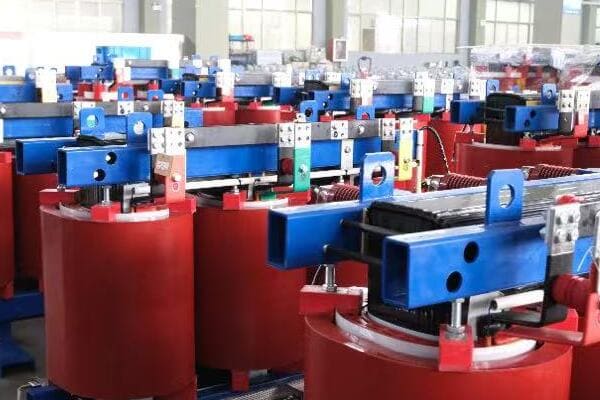
Comparing Prices Across Voltage Classes
Let's examine the price impact for each voltage class:
- 6kV Transformers
- 10kV Transformers (Baseline)
- 20kV Transformers
- 33kV Transformers
- Factors Driving Price Differences
6kV Transformers
Lower voltage, lower cost:
- Typically 5-10% cheaper than 10kV equivalents
- Simpler insulation design
- Often used in industrial applications with shorter distribution distances
I recently worked on a project for a manufacturing facility where we opted for 6kV dry type transformers. The lower voltage class allowed for cost savings without compromising on the power distribution needs of the facility, given its compact layout.
10kV Transformers (Baseline)
Standard for many distribution networks:
- Used as a baseline for price comparisons
- Common in commercial and light industrial applications
- Balance of cost and performance for many projects
During a recent urban development project, we extensively used 10kV dry type transformers. Their cost-effectiveness and compatibility with the local distribution network made them an ideal choice for powering various commercial and residential buildings.
20kV Transformers
Meeting higher voltage requirements:
- Typically 10-15% more expensive than 10kV units
- Increased insulation and winding complexity
- Growing popularity in some regions for enhanced distribution efficiency
Here's a comparison of price impacts across voltage classes:
| Voltage Class | Price Impact | Typical Application |
|---|---|---|
| 6kV | -5% to -10% | Industrial, short-distance distribution |
| 10kV | Baseline | Commercial, light industrial |
| 20kV | +10% to +15% | Medium voltage distribution, some residential |
| 33kV | +20% to +30% | Heavy industrial, utility substations |
33kV Transformers
High voltage, premium pricing:
- 20-30% more expensive than 10kV equivalents
- Sophisticated design and enhanced insulation
- Used in utility-scale projects and heavy industrial applications
Factors Driving Price Differences
Understanding the cost variations:
- Insulation requirements: Higher voltages need more robust insulation
- Winding complexity: More turns and sophisticated designs for higher voltages
- Testing and certification: Stricter requirements for higher voltage classes
- Material quality: Premium materials often needed for higher voltage units
Key points about voltage class impact on transformer pricing:
- Price increases significantly with higher voltage classes
- 6kV offers cost savings for suitable applications
- 10kV serves as a cost-effective standard for many projects
- 20kV balances enhanced distribution with moderate price increase
- 33kV commands a premium but offers benefits for high-power applications
In my experience, carefully considering the voltage class can lead to significant project optimizations. I recall a case where a client initially specified 33kV transformers for a large commercial development, assuming higher voltage meant better efficiency. After a detailed analysis of the load distribution and future growth projections, we determined that 20kV units would suffice. This adjustment resulted in substantial cost savings without compromising on power quality or future expandability.
For example, in a recent renewable energy project, we used a combination of 20kV and 33kV dry type transformers at different points in the power distribution system. The 20kV units were cost-effective for local distribution within the solar farm, while 33kV transformers were used for the main grid connection, balancing cost with the need for higher voltage at the interconnection point.
As we move on to discuss how certifications and cooling methods affect transformer pricing, keep these voltage class considerations in mind. Understanding the cost implications of different voltage ratings will help you make more informed decisions when specifying transformers for your projects, ensuring you get the right balance of performance and cost-effectiveness.
Certifications and Cooling Methods That Increase Cost?
Are you wondering why some dry type transformers come with significantly higher price tags? You're not alone. Many buyers are surprised by the cost impact of certain certifications and cooling methods. But which specific factors can substantially increase the price of a dry type transformer?
Certifications like CE marking and IEC 60076 compliance can increase dry type transformer costs by 5-15%, depending on the extent of testing required. KEMA or CESI type test certifications can add another 3-8% to the price due to rigorous third-party verification. Regarding cooling methods, forced air (AF) cooling typically increases costs by 8-15% compared to natural air (AN) cooling, due to additional components and controls. Enhanced protection ratings, such as IP23 or higher, can add 5-10% to the cost. These factors compound, potentially increasing the overall price by 20-30% for a fully certified, high-spec unit.
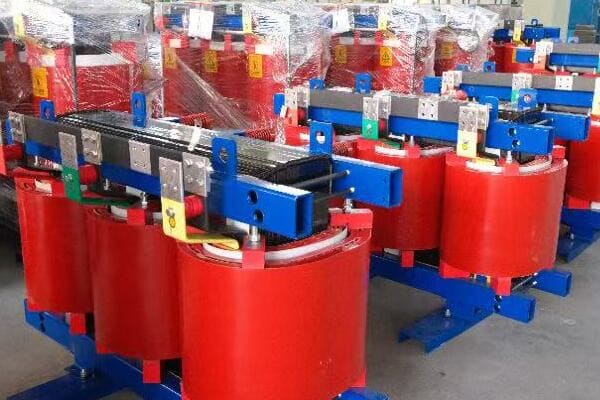
Key Cost-Increasing Factors
Let's examine the main elements that can drive up transformer prices:
- International Certifications
- Cooling Methods
- Protection Ratings
- Special Testing Requirements
- Customization and Advanced Features
International Certifications
Ensuring global compliance and quality:
- CE Marking: Essential for European market, adds 5-10% to cost
- IEC 60076 Compliance: International standard, increases price by 3-7%
- KEMA or CESI Type Testing: Premium certification, adds 3-8% to cost
I recently managed a project exporting dry type transformers to the EU. The CE certification process, including additional testing and documentation, increased our costs by about 8%. However, this certification was crucial for market entry and customer confidence.
Cooling Methods
Balancing performance and cost:
- AN (Air Natural): Baseline cooling method
- AF (Air Forced): 8-15% cost increase over AN
- AFWF (Air Forced Water Forced): Can increase cost by 20-25%
During a recent industrial project, we opted for AF cooling on a 2000kVA transformer. While this increased the cost by about 12%, it allowed for a more compact design and better performance in the high-ambient temperature environment of the factory.
Protection Ratings
Enhancing durability and safety:
- IP21 (Standard): Baseline protection
- IP23: 5-7% cost increase
- IP54 and above: 10-15% or more, depending on requirements
Here's a comparison of protection ratings and their cost impacts:
| IP Rating | Cost Increase | Typical Application |
|---|---|---|
| IP21 | Baseline | Indoor, controlled environments |
| IP23 | +5-7% | Light industrial, some outdoor |
| IP54 | +10-15% | Dusty or wet environments |
| IP65 | +15-20% | Harsh industrial or outdoor settings |
Special Testing Requirements
Verifying performance and reliability:
- Routine Tests: Included in base price
- Type Tests: Can add 5-10% to cost
- Special Tests (e.g., short-circuit withstand): 3-7% additional cost
Customization and Advanced Features
Meeting specific project needs:
- Custom Voltage Ratings: 3-5% cost increase
- Advanced Monitoring Systems: 5-10% additional cost
- Special Materials (e.g., low-loss core): 7-12% price increase
Key points about cost-increasing factors:
- International certifications are often necessary but add significant cost
- Advanced cooling methods increase price but improve performance
- Higher protection ratings are crucial for certain environments but come at a premium
- Special testing can substantially impact cost but may be required for critical applications
- Customization and advanced features offer benefits but at higher prices
In my experience, carefully evaluating these factors against project requirements can lead to optimal cost-performance balance. I recall a project where a client initially requested the highest level of certification and protection rating for an indoor installation. After a thorough risk assessment, we determined that a more standard configuration with targeted enhancements would meet all safety and performance needs at a significantly lower cost.
For example, in a recent data center project, we justified the additional cost of AF cooling and advanced monitoring systems for the dry type transformers. While this increased the initial investment by about 20%, it provided crucial benefits in terms of reliability, efficiency, and remote management capabilities, which were essential for the critical nature of the facility.
As we move on to discuss recommended Chinese manufacturers offering transparent pricing and OEM support, keep these cost-increasing factors in mind. Understanding their impact will help you better evaluate different manufacturers' offerings and ensure you're getting the best value for your specific requirements.
Recommended Chinese Manufacturers Offering Transparent Pricing and OEM Support?
Are you finding it challenging to identify reliable Chinese manufacturers of dry type transformers that offer both competitive pricing and quality assurance? You're not alone. Many international buyers struggle to navigate the vast landscape of Chinese suppliers. But which manufacturers stand out for their transparency, OEM capabilities, and export-friendly practices?
Top recommended Chinese dry type transformer manufacturers known for transparent pricing and strong OEM support include CHBEB, CHINT, TBEA, and Sieyuan Electric. These companies offer a range of transformers from 100kVA to 3150kVA, with voltage classes up to 35kV. They provide comprehensive documentation, including detailed quotations, technical specifications, and necessary certifications like ISO 9001, IEC 60076, and CE marking. Many offer customization options, English-speaking support teams, and experience in major export markets across Asia, Africa, and the Middle East.
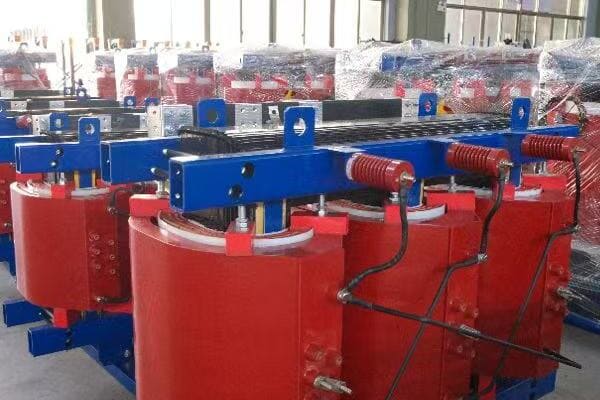
Leading Dry Type Transformer Manufacturers in China
Let's examine the top recommended suppliers:
- CHBEB (China Bei Er Bian)
- CHINT
- TBEA
- Sieyuan Electric
CHBEB (China Bei Er Bian)
Specializing in customized solutions:
- Capacity range: 250-2500kVA
- Voltage classes: Up to 35kV
- Key strengths: OEM capabilities, export-oriented, competitive pricing
- Certifications: ISO 9001, IEC, CE
I recently worked with CHBEB on a project requiring custom dry type transformers for a harsh industrial environment. Their willingness to adapt designs and provide detailed documentation greatly simplified the procurement process.
CHINT
Comprehensive power solution provider:
- Capacity range: 100-2500kVA
- Voltage classes: Up to 35kV
- Key strengths: Wide product range, stable pricing, global distribution network
- Certifications: ISO, CE, KEMA
During a recent large-scale commercial development project, we sourced multiple dry type transformers from CHINT. Their transparent pricing structure and ability to handle bulk orders efficiently were key factors in our decision.
TBEA
High-end transformer solutions:
- Capacity range: 500-3150kVA
- Voltage classes: Up to 35kV
- Key strengths: Advanced technology, experience in large-scale projects
- Certifications: CNAS, ISO
Here's a quick comparison of these manufacturers:
| Manufacturer | Capacity Range | Key Strength | Price Competitiveness |
|---|---|---|---|
| CHBEB | 250-2500kVA | Customization, OEM | High |
| CHINT | 100-2500kVA | Wide range, stable pricing | Very High |
| TBEA | 500-3150kVA | High-end solutions | Moderate |
| Sieyuan | 630-2500kVA | GIS integration | High |
Sieyuan Electric
Integrated power solutions:
- Capacity range: 630-2500kVA
- Voltage classes: Up to 35kV
- Key strengths: GIS integration capabilities, smart grid solutions
- Certifications: ISO 14001, IEC
Key points about recommended Chinese manufacturers:
- They offer a wide range of capacities and voltage classes
- Most provide comprehensive documentation and export support
- Certifications and compliance with international standards are common
- Many have experience in key export markets
- OEM and customization capabilities are available
In my experience, these manufacturers have consistently demonstrated their ability to meet international quality standards while offering competitive pricing. I recall a project where we needed dry type transformers for a series of data centers across Southeast Asia. By working with CHBEB, we were able to develop a custom design that met the specific cooling and efficiency requirements of the project, all while staying within budget constraints.
For example, in a recent renewable energy project, we utilized transformers from CHINT for solar farm connections. Their ability to provide a large number of standardized units quickly, along with all necessary certifications for the target market, was crucial in meeting the project's aggressive timeline.
As we move on to discuss how to get a custom quotation based on your project specs, keep these manufacturer profiles in mind. Understanding their strengths and specialties will help you target your inquiries more effectively and potentially find the best match for your specific transformer needs.
Get a Custom Quotation Based on Your Project Specs?
Are you ready to take the next step and obtain accurate pricing for your dry type transformer needs? Getting a tailored quotation is crucial for budget planning and supplier selection. But what information do you need to provide to ensure you receive the most accurate and competitive quotes?
To get a custom quotation for dry type transformers, provide detailed specifications including kVA rating, primary and secondary voltage levels, frequency, cooling method (AN/AF), and required protection rating (IP class). Specify any special requirements such as low-loss design, monitoring systems, or specific certifications needed (e.g., CE, IEC 60076). Include information about the project location, quantity needed, and preferred delivery timeframe. Most reputable manufacturers offer quick quote turnaround, typically within 24-48 hours for standard configurations, and can provide detailed technical proposals for more complex requirements.
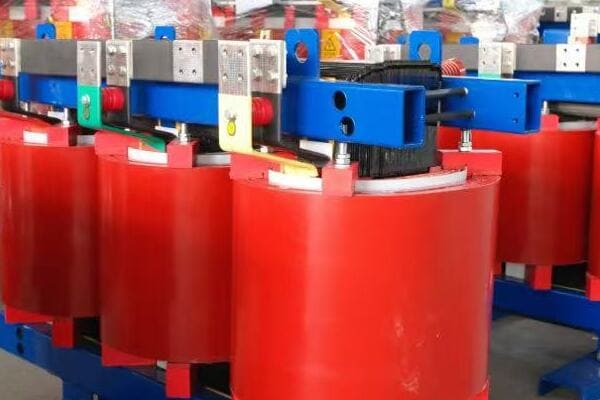
Key Steps to Obtain a Custom Quotation
Let's break down the process:
- Preparing Your Specifications
- Choosing the Right Manufacturers
- Submitting Your Request for Quotation (RFQ)
- Evaluating and Comparing Quotes
- Next Steps After Receiving Quotes
Preparing Your Specifications
Gathering essential information:
- kVA rating and voltage levels (primary/secondary)
- Frequency (50Hz or 60Hz)
- Cooling method (AN or AF)
- Protection rating (IP class)
- Any special requirements or certifications needed
I recently helped a client prepare specifications for a series of dry type transformers for a new commercial complex. By clearly defining requirements like a 1000kVA capacity, 11kV/400V voltage, AF cooling, and IP23 protection, we ensured the quotes we received were accurate and comparable.
Choosing the Right Manufacturers
Selecting potential suppliers:
- Research manufacturers with relevant experience
- Consider those with a strong export track record
- Look for suppliers offering transparent pricing and good communication
Submitting Your Request for Quotation (RFQ)
Crafting a comprehensive inquiry:
- Clearly state all technical requirements
- Specify quantity needed and desired delivery timeframe
- Include any specific testing or documentation requirements
Here's a checklist of information to include in your RFQ:
| Information | Example |
|---|---|
| kVA Rating | 1000kVA |
| Voltage | 11kV/400V |
| Frequency | 50Hz |
| Cooling Method | AF (Air Forced) |
| IP Rating | IP23 |
| Quantity | 5 units |
| Delivery Timeframe | Within 12 weeks |
| Special Requirements | Low-loss design, SCADA compatible |
Evaluating and Comparing Quotes
Analyzing received proposals:
- Compare technical specifications to ensure they meet your requirements
- Look at pricing structure and what's included (e.g., testing, documentation)
- Consider delivery times and payment terms
- Evaluate after-sales support and warranty offerings
Next Steps After Receiving Quotes
Moving forward with your project:
- Clarify any questions or ambiguities in the quotes
- Request sample documentation or test reports if needed
- Consider factory visits for large or critical projects
- Negotiate terms and prepare for order placement
Key points for obtaining custom quotations:
- Prepare detailed and accurate specifications
- Choose manufacturers with relevant experience and good reputations
- Submit comprehensive RFQs to ensure accurate quotes
- Carefully evaluate and compare received quotations
- Follow up on any questions and prepare for next steps
In my experience, providing clear and comprehensive information in your RFQ is crucial for receiving accurate and comparable quotes. I recall a project where initial quotes varied widely due to ambiguous specifications. By refining our RFQ with more precise requirements, including specific loss levels and noise constraints, we received much more consistent and useful quotations from suppliers.
For example, in a recent renewable energy project, we needed dry type transformers with special corrosion resistance for a coastal environment. By clearly specifying this requirement in our RFQ, along with the necessary capacity and voltage ratings, we received detailed proposals from manufacturers, including specialized designs and materials to meet the challenging environmental conditions.
Remember, the quality of the information you provide directly impacts the accuracy and usefulness of the quotations you receive. Take the time to prepare a thorough RFQ, and don't hesitate to ask questions or request additional information from manufacturers. This diligence in the quoting process can save significant time and resources as your project moves forward.
Conclusion
Dry type transformer pricing in 2025 varies significantly based on kVA rating, voltage class, certifications, and cooling methods. Prices range from $1,200 for 100kVA units to over $18,000 for 2500kVA transformers. Higher voltage classes and advanced features increase costs. When sourcing, consider reputable Chinese manufacturers known for quality and competitive pricing. Always provide detailed specifications for accurate quotes. Careful evaluation of your project needs against these factors will ensure optimal transformer selection and cost-effectiveness.
Remember, at chbeb-ele, we're not just sharing information – we're empowering you to be part of the solution in creating a secure, clean, and efficient energy future. Let's continue this journey together.


